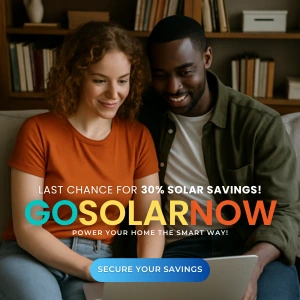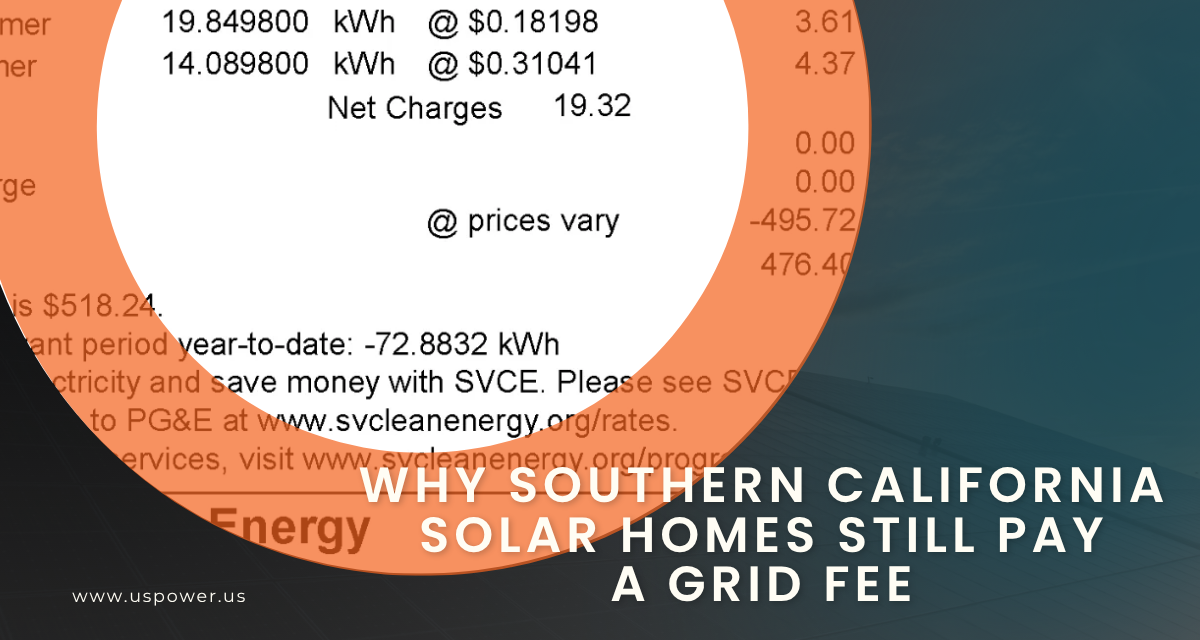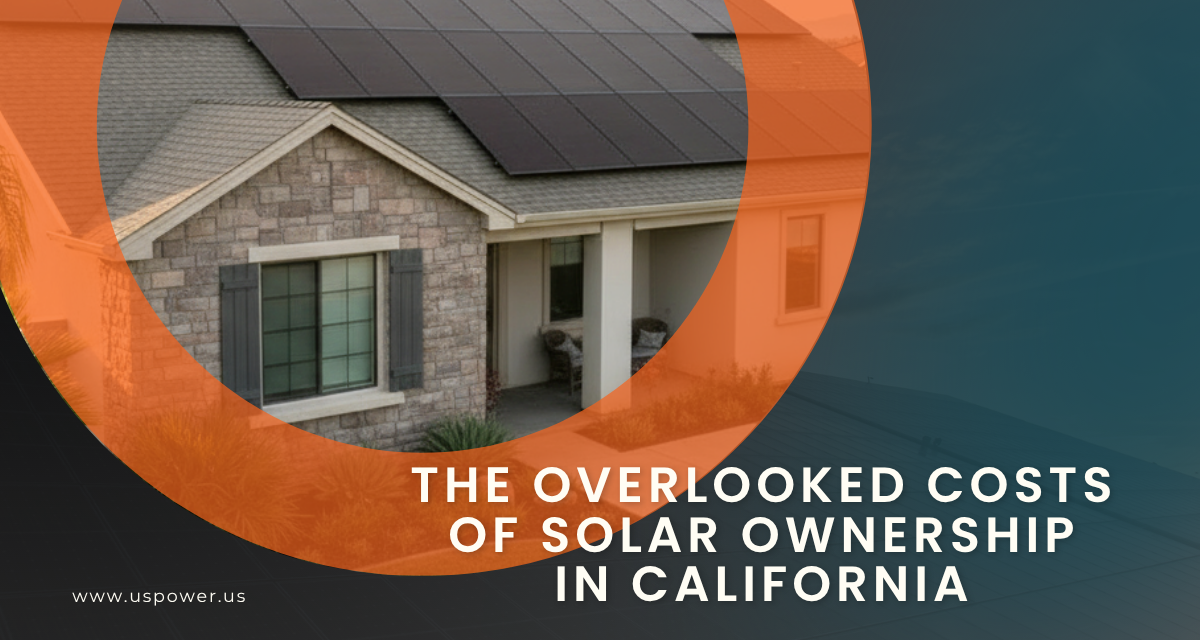What Every California Homeowner Should Know Before Signing

Solar and Roofing Advisor
The 30% solar credit ends Dec 31, 2025. Watch for contract changes, hidden fees, and false promises before going solar in California. Call US Power!

The federal Residential Clean Energy Credit—long known as the 30% solar tax credit—is officially ending this year under the One Big Beautiful Bill (OBBB) signed on July 4, 2025.
That means any homeowner in Southern California who wants to claim the 30% tax credit must have their solar system purchased and installed before December 31, 2025.
This update has triggered a last-minute solar rush. But as installation demand spikes, so do the number of complaints about misleading contracts, inflated fees, and project delays. Many homeowners are discovering—too late—that what they signed for isn’t what they’re getting.
Before you join the end-of-year race to go solar, here’s what you must understand about your rights, your risks, and how to avoid becoming another cautionary tale.
Why Homeowners Are Rushing — and What’s Changed in 2025
California electricity rates are now among the highest in the U.S., averaging around 30¢ per kWh—roughly double the national average.
Southern California Edison (SCE) and other utilities are also implementing additional rate hikes of up to 10% in 2025 to cover wildfire prevention and grid maintenance costs.
At the same time, the 30% federal solar credit that once ran through 2032 now ends after this year, creating an intense push to “lock in savings before it’s gone.”
For a typical Southern California homeowner with a $180 monthly electric bill, going solar before year-end can mean thousands in lifetime savings—but only if the system is designed, installed, and financed correctly.
The Hidden Risk: Contract Changes After You Sign
One of the most common 2025 homeowner complaints is “price creep”—when solar vendors change terms, equipment, or pricing after a contract is signed.
Take this real-world example from an L.A. homeowner:
They signed a solar contract in June 2025 for a clay-tile-roof installation. Months later, the company claimed the roof was “too fragile” and demanded an extra $10,000 for alternative mounting—or else the customer would forfeit $3,000 in cancellation fees.
Unfortunately, this scenario is not rare.
Many national sales companies lock homeowners into contracts before performing a proper site inspection. When real-world conditions (like tile roofing or electrical upgrades) appear, they try to pass those costs back to the homeowner.
What California Law Says
Under the California Solar Consumer Protection Guide and Public Utilities Code § 2868, solar providers must disclose all foreseeable costs and cannot misrepresent the price or scope of work. If the company knew about your roof type from satellite imagery or a site survey, changing terms later may be considered a breach of contract.
Common Contract Red Flags Homeowners Miss
Here are key red flags every homeowner should look for before signing a solar agreement in 2025:
Vague Equipment Descriptions
If your contract doesn’t specify the brand, model, and capacity of your panels and inverter, you could receive lower-efficiency hardware than promised. At US Power, we disclose all details upfront—including our exclusive partnership with Qcells, which allows us to offer factory-direct, American-made panels at transparent pricing.
“Conditional” Pricing Clauses
Some companies include language that lets them adjust your price after design review or permitting.
Always ask:
“Is this the final price, or can it change after inspection?”
Reputable installers like US Power lock in your price once your project is approved—no hidden adjustments later.
Delayed Permitting or Installation
Solar permitting backlogs across Southern California are real. But if your installer hasn’t submitted your permit within 30 days of contract signing, that’s a red flag.
With the tax credit ending soon, delays could cost you eligibility. US Power’s in-house project management ensures timely submission and installation to meet 2025 deadlines.
Misleading Roof Assessments
If a contractor only reviews your home via satellite or Google Earth, they may miss roof damage or conditions that require additional work.
Insist on a site-verified roof inspection before signing, especially for tile or flat roofs.
Overpromised Savings
Claims like “zero bill” or “90% offset guaranteed” often ignore new net-metering realities. Under NEM 3.0, homeowners earn less for exported power, meaning accurate system sizing is more important than ever.
A transparent installer will model your system based on real consumption data and current NEM 3.0 rates, not outdated NEM 2.0 projections.
Real Costs of Going Solar in Southern California (as of Nov 2025)
| System Size | Typical Cost (Before Credit) | After 30% Credit — If Installed by Dec 31 2025 | Average Payback Period |
|---|---|---|---|
| 4 kW (home less than 1,000 sq ft) | $11,000 – $13,000 | $7,700 – $9,100 | 6 – 8 years |
| 6 kW (home 1,500–2,000 sq ft) | $15,000 – $18,000 | $10,500 – $12,600 | 6 – 7 years |
| 10 kW (larger home + EV) | $24,000 – $28,000 | $16,800 – $19,600 | 7 – 9 years |
Data from NREL Solar Cost Benchmark 2025.
What to Do If Your Installer Changes Terms
If your installer tries to raise prices or alter contract terms after signing:
- Review your contract — confirm whether it allows for post-inspection adjustments.
- Document all communication — keep emails, texts, and call logs.
- Contact the California Contractors State License Board (CSLB) at www.cslb.ca.gov to file a complaint if you suspect misrepresentation.
- Consult a consumer attorney if significant funds are involved or deadlines jeopardize your tax credit.
And most importantly, don’t rush into another contract just to “beat the deadline.”
A poorly written solar agreement can cost far more than missing the credit.
Why Working with US Power Protects You
US Power is not a sales brokerage that passes projects to third-party installers. We handle everything in-house—from site evaluation and design to permitting, installation, and final utility interconnection.
We’re also a Qcells Elite Partner, giving homeowners access to factory-direct pricing and American-made solar panels designed for superior durability and performance under Southern California heat.
Our systems are engineered for compliance with NEM 3.0 and compatible with the latest solar battery storage technologies, providing backup power and optimized time-of-use savings.
2025 Is the Solar Deadline Year
If you’ve been waiting to go solar, 2025 is your make-or-break year. Under current law, homeowners only have until December 31, 2025 to qualify for the 30% Residential Clean Energy Credit. After that, new installations will not be eligible under Section 25D. Electric rates are expected to rise again in 2026, and delays in permitting or contractor availability could easily push your project past the deadline.
Don’t wait until it’s too late.
Schedule your solar assessment to lock in the 30% credit before it disappears for good.
Serving homeowners across Los Angeles, Ventura, Orange, Riverside, and San Bernardino Counties.
Frequently Asked Questions
Related Articles
Our Related Blogs
Why Southern California Solar Homes Still Pay a Grid Fee
Fixed monthly fees for SoCal solar homes explained clearly. Save more on solar!
The Overlooked Costs of Solar Ownership in California
Understand how to manage and minimize your ongoing solar costs in California.
Why Some Solar Quotes Cost More Than Others in California
Discover why the lowest solar quote isn’t always the best deal. Make Smart Choices!








We empower communities and businesses to harness clean, renewable solar energy solutions that drive sustainable growth.
Ready to Own Your Power? Call us today!
818-650-8010
Copyright © 2025 US Power - Axia by QCells. All Rights Reserved.
Privacy is important to us, so you have the option of disabling certain types of storage that may not be necessary for the basic functioning of the website. Blocking categories may impact your experience on the website.
Essential
These items are required to enable basic website functionality.
Personalization
These items allow the website to remember choices you make (such as your user name, language, or the region you are in) and provide enhanced, more personal features.
Marketing
These items are used to deliver advertising that is more relevant to you and your interests.
Analytics
These items help the website operator understand how its website performs, how visitors interact with the site, and whether there may be technical issues.
We and our third-party partners use cookies and other technologies to enhance and track your experience on this site, conduct analytics, and personalize marketing to you. By using the site, you agree to our use of these technologies, including recording and monitoring your interactions with the site.
Get an instant solar estimate using satellite!









